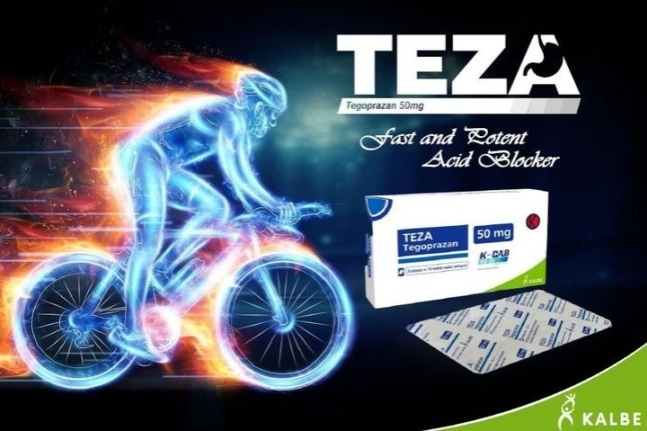Bio & Pharma
HK inno.N releases new drug for GERD in Indonesia
S.Korean bio-health company's K-CAB enters the market in SE Asia's top country for digestive ulcer treatments
By Jul 10, 2023 (Gmt+09:00)
1
Min read
Most Read
LG Chem to sell water filter business to Glenwood PE for $692 million


Kyobo Life poised to buy Japan’s SBI Group-owned savings bank


KT&G eyes overseas M&A after rejecting activist fund's offer


StockX in merger talks with Naver’s online reseller Kream


Mirae Asset to be named Korea Post’s core real estate fund operator



South Korean bio-health company HK inno.N Corporation's new drug for gastroesophageal reflux disease (GERD) K-CAB has been officially launched in Indonesia, the largest market in Southeast Asia.
HK inno.N announced on Monday that it has launched the GERD drug K-CAB (generic name: Tegoprazan) in Indonesia. The product name in Indonesia is Teza, and local marketing and distribution will be handled by Kalbe, a leading pharmaceutical company in Southeast Asia.
Kalbe, the partner company, specializes in gastrointestinal diseases and recorded sales of $261 million as of 2022, ranking first in the overall pharmaceutical sales in Indonesia.
Indonesia is the fourth most populous country in the world and holds the top position in the market for digestive ulcer treatments in Southeast Asia. The market size for digestive ulcer treatments in Indonesia was $172.42 million as of last year.
After the initial launch of K-CAB in South Korea in 2019, HK inno.N made its overseas debut by launching the drug in China, the largest market for digestive ulcer treatments worldwide, last year. K-CAB has also been launched in Mongolia, the Philippines, and Mexico, the second-largest pharmaceutical market in Latin America, in May.
With this latest launch, K-CAB is now available in six countries, including South Korea. K-CAB has made its way to 35 foreign countries through technology exports or finished product exports.
HK inno.N's K-CAB is a new drug for GERD belonging to the P-CAB (potassium-competitive acid blocker) class. It has the most indications among similar drugs in South Korea, including non-erosive reflux disease, erosive reflux disease, gastric ulcer, antibiotic combination therapy for Helicobacter pylori eradication in patients with gastric ulcers and chronic atrophic gastritis and maintenance therapy after treatment for non-erosive reflux disease.
Last year, it achieved over 130 billion won ($100 million) in outpatient prescriptions in South Korea and has maintained its position as the top-selling drug for digestive ulcer treatments for three consecutive years since its launch, recording accumulated outpatient prescription sales of 60.7 billion won ($46.7 million) from January to May this year.
Write to Ji-Hyun Lee at bluesky@hankyung.com
More to Read
-
 Bio & PharmaHK inno.N's GERD drug K-CAB gets approval in Mexico
Bio & PharmaHK inno.N's GERD drug K-CAB gets approval in MexicoFeb 14, 2023 (Gmt+09:00)
1 Min read -
 Bio & PharmaHK inno.N to introduce biosimilars for bone disease treatment from Spain
Bio & PharmaHK inno.N to introduce biosimilars for bone disease treatment from SpainJan 26, 2023 (Gmt+09:00)
1 Min read -
 Bio & PharmaHK inno.N's K-CAB to get insurance benefits in China
Bio & PharmaHK inno.N's K-CAB to get insurance benefits in ChinaJan 20, 2023 (Gmt+09:00)
1 Min read -

-
 Bio & PharmaHK inno.N receives sales permit for ulcer treatment in China
Bio & PharmaHK inno.N receives sales permit for ulcer treatment in ChinaApr 13, 2022 (Gmt+09:00)
1 Min read
Comment 0
LOG IN


